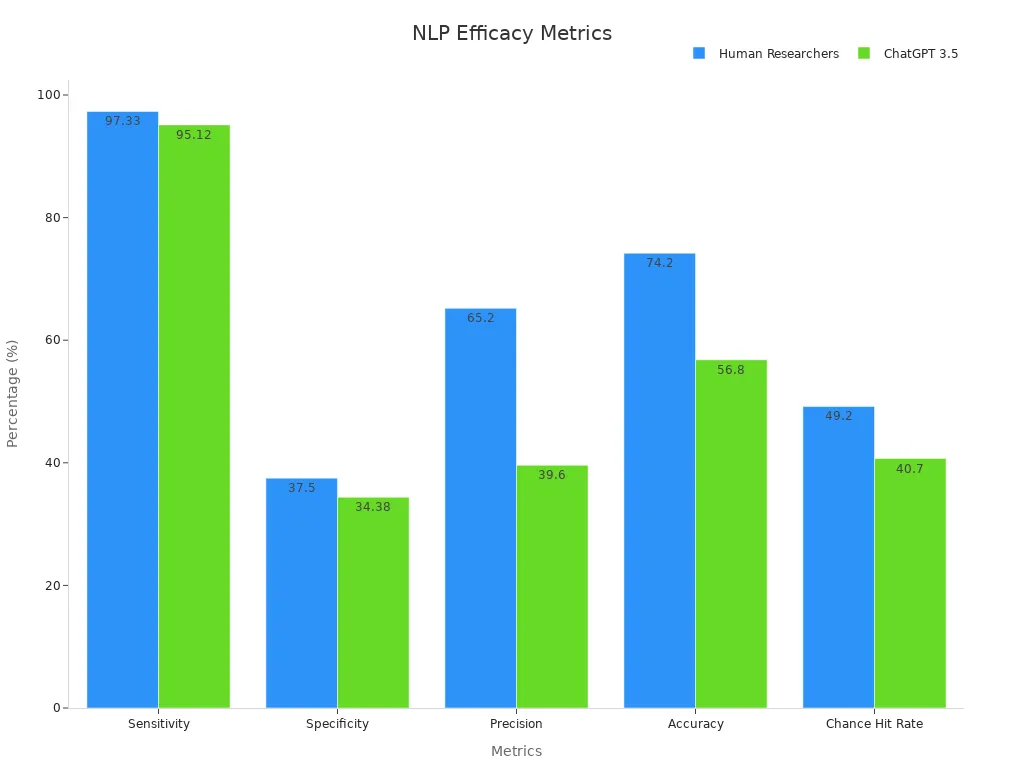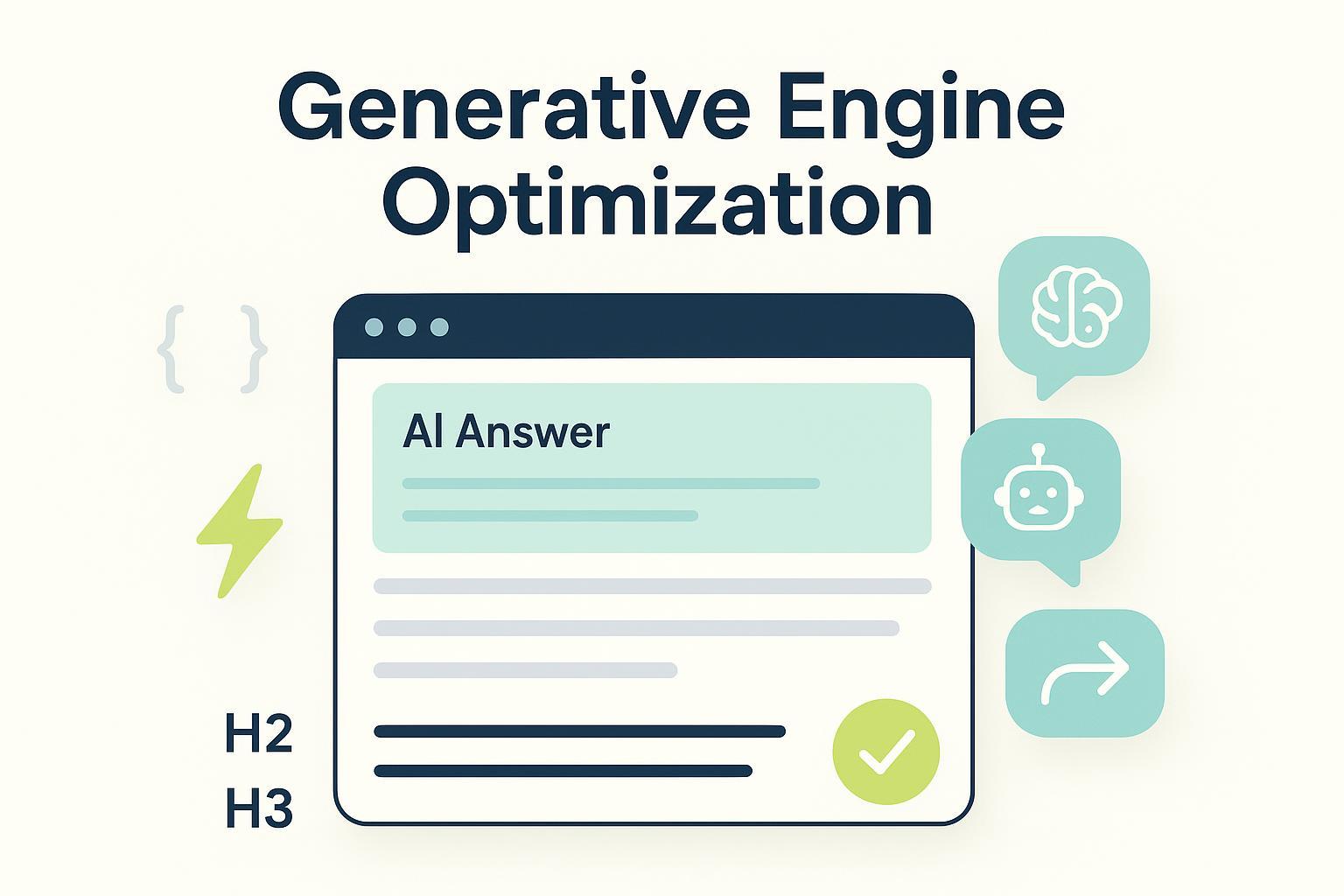What Is AI Search and How Does It Work
AI Search uses machine learning and NLP to understand user intent, delivering smarter, faster, and more accurate search results compared to traditional methods.


Imagine a search engine that knows what you mean, not just what you type. AI Search makes this possible by using artificial intelligence with search tools. It doesn’t only look for keywords; it understands meaning, context, and purpose. This helps give you smarter and more accurate results.
For example, research shows AI tools can make search results 30% better than older methods. Also, platforms like ChatGPT and Google Gemini now get 78% of all visits to AI-based search tools. With millions already using these tools, AI Search is changing how people find information online.
Key Takeaways
AI Search figures out what you mean, not just the words you type. This helps give better and smarter search results.
Using AI tools can make search results up to 30% better. This helps you find what you need faster and easier.
AI Search makes your experience personal by showing results based on what you’ve searched before and what you like. This makes users happier.
Businesses using AI Search can get big advantages, like more sales and better customer connections.
AI Search can grow and handle lots of data well. This makes it great for businesses of any size.
What Is AI Search?
Definition and purpose
AI Search uses artificial intelligence to make search engines smarter. Unlike old methods, it doesn’t just look for matching words. It uses tools like natural language processing (NLP) and machine learning (ML) to figure out what you mean when you search. This helps it give you better and more useful results.
For example, AI Search understands what you’re asking. If you type "best laptops for students," it knows you want suggestions, not just a list of laptops. It works by studying context, user habits, and trends to give smarter answers.
Fun fact: AI search engines need good-quality data to work well. Bad or biased data can cause wrong results, so data quality is very important.
Key differences from traditional search
AI Search is very different from older search methods. Traditional search engines match exact words and follow fixed rules. They often fail with tricky or unclear questions. AI Search uses smart algorithms and generative AI to give better answers.
Here’s how they differ:
Understanding intent: Old search matches words, but AI Search knows what you mean.
Response style: Old search shows links, while AI Search gives full answers.
Handling complexity: AI Search, like Gemini 2.5, handles tough questions with detailed replies.
These features make AI Search a big improvement. It’s great for people who want fast and clear answers.
Importance in the digital age
Today, AI Search is super important for finding information. It’s not just about getting answers—it’s about getting the right ones quickly. Businesses also use AI Search to help customers and get better results.
Here’s why AI Search matters:
Companies using AI see a 20% boost in marketing success.
AI-powered tools increase average spending by 40%.
AI-optimized content gets 83% more engagement.
These numbers show how AI Search is changing industries. Whether you’re shopping, learning, or running a business, AI Search saves time and helps you make smarter choices. It’s now a must-have in today’s digital world.
How Does AI Search Work?
Data indexing and organization
AI Search starts by organizing data in a smart way. You may wonder how search engines manage so much online information. They use data indexing, which sorts and stores data neatly. This helps the system find what you need quickly.
AI indexing uses smart algorithms to work better and faster. It checks data quality, removes repeated info, and focuses on useful content. Performance metrics prove these improvements. For example:
Metric | What It Means |
|---|---|
Quality index | Combines different scores to measure how well the system works. |
Error rate | Shows how often the system gives wrong answers. |
Latency | Measures how fast the system responds to your search. |
F1 score | Checks how accurate and complete the system’s answers are. |
Precision and Recall | Measures how correct and complete the positive results are. |
Root mean squared error (RMSE) | Finds the average size of mistakes between predicted and actual results. |
These metrics show how AI Search organizes data to give faster, better answers.
Machine learning and natural language processing (NLP)
Machine learning and NLP are key parts of AI Search. They help search engines understand human language better. When you type a question, NLP studies the words to figure out what you mean. Machine learning improves this by learning from past searches and user habits.
Studies show how NLP has gotten better in AI Search. For example, researchers compared humans with AI systems like ChatGPT 3.5. The results show big improvements:
Metric | Human Researchers | ChatGPT 3.5 |
|---|---|---|
Sensitivity | 97.33% | 95.12% |
Specificity | 37.5% | 34.38% |
Precision | 65.2% | 39.6% |
Accuracy | 74.2% | 56.8% |
Chance Hit Rate | 49.2% | 40.7% |

These improvements help AI Search handle tricky questions and give better answers.
Query understanding and intent recognition
AI Search is great at knowing what you mean, not just what you type. It uses NLP and smart analysis to understand your searches. For example, if you search "best laptops for students," it knows you want suggestions, not just a random list.
Advanced tools like BERT make intent recognition even better. They study whole sentences to find word relationships and give accurate answers. AI search engines also customize results based on your likes and past searches. This makes sure the answers fit your needs.
Metrics prove how well these methods work. For example, models tested against the BERT-BiLSTM-CRF framework show similar results without needing huge training data. This shows how AI Search gets high accuracy in understanding what users want.
Ranking and delivering results
AI Search doesn’t just find information; it picks what’s most useful. It uses smart systems to rank and organize answers based on importance. This helps the best results show up first in your search.
AI ranking tools check many things to decide result order. They look at clicks, purchases, and ratings from users. For example, if lots of people click a link and stay on the page, the system learns it’s helpful. Over time, it changes rankings to show more good content.
Modern AI tools also compare small sections of text for better matches. Instead of old scoring methods, they pair passages to find the best fit. This makes sure answers match your question closely. Studies show this method improves search accuracy by focusing on meaning.
Platforms like Ahrefs and SEMrush use AI to track keywords and user actions. They predict ranking drops and adjust quickly to keep content competitive. Businesses using these tools often see a 20% boost in sales, showing AI ranking works well.
Precision and recall are important for testing these systems. Precision checks how many results are correct, while recall counts all relevant answers found. High scores mean the system gives accurate and complete results.
AI Search also updates rankings based on real-time user feedback. If trends change, the system adapts fast to show new, useful content. This keeps your search results fresh and helpful every time.
Benefits of AI Search

Better accuracy and relevance
AI Search helps you find correct and useful information. It doesn’t just look for matching words; it figures out what you mean. For example, in a healthcare legal case, AI reviewed flagged files. It found that over half were not important. Lawyers later agreed, saving time and money. This shows how AI makes tough tasks more precise.
AI also uses smart language tools to gather evidence quickly. These tools handle boring tasks, so researchers can focus on understanding data. You get fast, high-quality info without losing accuracy.
Big language tools speed up evidence gathering.
AI tools work faster while staying reliable.
Quicker and smoother search results
Speed is key when searching, and AI Search is faster than old methods. It uses tools like Time to First Token (TTFT) and Total Response Time to measure speed. These tools check how fast answers appear and finish, making searches better.
Metric | What It Does | Why It Matters |
|---|---|---|
TTFT | Time to show the first word | Makes searches feel faster |
TPOT | Time for each next word | Speeds up full answers |
Total response time | Time for complete answers | Improves user experience |
Output token throughput | Words made per second | Shows system efficiency |
AI systems improve these tools to give answers in seconds. This helps you find what you need quickly.
Custom user experiences
AI Search adjusts results to fit your likes and needs. It uses smart tools to study your searches, habits, and interests. For example, if you searched for laptops before, AI might suggest models you’d like.
Personalized suggestions show items that match your taste.
Companies using AI report a 40% boost in worker productivity.
Businesses using AI tools make decisions 63% faster.
AI-powered search improves teamwork by 35%.
These features make AI Search more than just a tool. It becomes a helpful assistant that understands you and gives tailored answers.
Scalability for large datasets
AI Search is great at handling huge amounts of data. It helps businesses and groups manage information better. Old search systems often struggle with big datasets. AI Search uses smart algorithms to work fast and find useful details. This gives accurate answers, even with tricky or large datasets.
Tip: AI tools adjust to your needs, whether you have thousands or millions of data points.
Scalability means more than just size. It’s about working well and being flexible. AI Search changes to match your business speed and needs. If your company grows and your data doubles, AI Search keeps working smoothly. This saves time and effort, letting you focus on decisions instead of tech problems.
Why is AI Search great for big datasets?
It studies large data quickly to find patterns and trends.
It adjusts to your needs, whether you’re growing or shrinking.
It keeps working well, even with harder or bigger data.
Platforms like Geneo make scalability even better. They help your website stay visible in AI searches. These tools track how well your site performs and give helpful tips. This keeps your content competitive online.
Using AI Search isn’t just about managing data—it’s about using it wisely. With its scalability, you can turn big datasets into useful chances. This makes AI Search a must-have for businesses dealing with today’s data challenges.
Practical Applications of AI Search

E-commerce: Personalized product recommendations
AI Search has changed online shopping by making it more personal. When you shop online, AI studies your likes, past buys, and browsing habits. It then suggests items that match your needs. This makes shopping feel special and easier for you.
Here’s how AI Search helps online stores:
Boosts Sales: Personal suggestions can increase sales by 10% or more.
Better Engagement: Custom ideas make shoppers interact more and buy.
Keeps Customers Loyal: Happy shoppers return to buy again.
Improves Satisfaction: Satisfied buyers recommend the store to others.
Reduces Abandoned Carts: AI helps solve doubts, so people finish buying.
With AI Search, shopping becomes smooth and enjoyable. It helps you find what you need faster.
Healthcare: Streamlining medical research
AI Search is changing healthcare by speeding up research. Instead of spending hours on data, AI tools summarize and highlight key points. This saves time for doctors and researchers.
Here’s how AI Search helps in healthcare:
AI organizes data, fixes errors, and improves medical notes.
Tools like Consensus AI give quick access to research papers.
Deep Research AI combines findings into clear reports for easy study.
These tools make research faster and more accurate. Doctors can focus more on patients and new ideas.
Customer support: AI-powered chatbots
AI chatbots are now a big part of customer support. They answer questions quickly and solve problems fast. With AI Search, chatbots understand your questions better and give correct answers.
Here’s how chatbots perform:
Metric | What It Means | Why It Matters |
|---|---|---|
How fast the chatbot replies. | Quick replies make customers happy. | |
Resolution Rate | How many problems are solved without human help. | High rates show the chatbot works well. |
Customer Satisfaction (CSAT) | How happy customers are after using the chatbot. | Shows if the chatbot gives a good experience. |
Net Promoter Score (NPS) | Measures if customers will recommend the service. | High scores mean customers trust the chatbot. |
Cost Per Resolution | The cost for each problem the chatbot solves. | Lower costs mean the chatbot saves money. |
User Retention Rate | How many users come back to use the chatbot again. | High rates mean customers like the chatbot. |
Error Rate | How often the chatbot gives wrong answers. | Fewer errors build trust and keep customers satisfied. |
AI chatbots save time and improve customer service. They make sure you get help quickly and easily.
Enterprise search: Making internal data easier to find
AI Search changes how companies find and use their data. Old search tools often fail with large or complex company files. AI-powered search tools fix this by understanding what you mean and giving exact answers.
These tools look at many types of data, like emails and documents. They understand the meaning and context of your searches. For example, smart models like GPT and BERT help understand company data better. This makes finding the right information faster and more accurate.
One example is Confluent using Glean’s AI search tool. It solved the problem of scattered data across 20+ systems. Employees found data faster, improving their work and happiness. This shows how AI Search makes work easier and teams more productive.
AI Search also saves time by quickly finding what you need. Instead of searching through many files, AI gives instant results. This saves hours and lets you focus on important tasks. These tools also grow with your company, handling more data as needed.
By improving how you find data, AI Search helps you work smarter. It removes the hassle of old search methods and gives your team better tools. Whether managing projects or making big decisions, AI Search keeps you ahead in today’s busy world.
The Future of AI Search
Improvements in talking AI and voice tools
Voice assistants like Siri and Alexa are getting smarter. This happens because of better talking AI and voice search tech. These tools now understand hard questions and give personal answers. Upgrades in NLP and machine learning turned simple bots into smart helpers. They can now have real conversations with users.
Voice search is popular since it’s quick and easy. Imagine asking your phone for a nearby coffee shop and getting directions right away. This tech is helping industries like retail and healthcare. For example, voice assistants answer questions fast, making things smoother. As these tools improve, they’ll change how people search for information.
Working with AR and VR
AI Search is moving beyond text and voice. It’s teaming up with augmented reality (AR) and virtual reality (VR). Together, they bring exciting new ideas. In healthcare, AR and VR help doctors during surgery with real-time images. They also create training spaces for medical workers to learn skills better.
Use Area | Benefits |
|---|---|
Surgery Help | Real-time images improve accuracy and results during operations. |
Training Spaces | Virtual environments help doctors practice important skills. |
Better Outcomes | Safer and more accurate surgeries reduce problems for patients. |
Brain Surgery | Tools give unmatched precision for tricky procedures. |
Intensive Care | Planning and patient care improve with AI and VR working together. |
These examples show how AI Search works with AR and VR to make smarter tools. Whether it’s helping doctors or making virtual shopping fun, this teamwork opens new doors.
Ethical issues and problems
As AI Search grows, it faces ethical problems. Some systems have shown unfairness in decisions. For example, Amazon’s hiring tool once picked men over women. This shows how bias can happen. To stop this, AI must follow strict rules. It should avoid harm and follow laws.
Evidence Type | What It Shows |
|---|---|
Case Study | Amazon’s hiring tool was unfair to women, showing bias risks. |
Ethical Rule | AI must not break laws or hurt people, stressing the need for rules. |
Ethical Rule | AI must avoid bias, especially when training algorithms. |
You can help keep AI Search fair and honest. Developers need to train systems carefully to avoid bias. Companies should be clear about how their AI works. By fixing these problems, AI Search can stay helpful and ethical.
AI Search is changing industries and helping people in many ways. In healthcare, it helps doctors find problems and give better treatments. This improves how patients are cared for. In finance, AI makes checking risks and spotting fraud easier. Farmers use AI to manage resources wisely and grow more crops. Stores like Amazon use AI to suggest items shoppers might like. This makes customers happier. These examples show how AI Search changes how we find and use information. As tech gets better, tools will become smarter, faster, and simpler to use.
FAQ
What makes AI Search unique compared to older search engines?
AI Search figures out what your questions really mean. It uses smart tools like machine learning and natural language processing to understand context. Older search engines only match exact words, but AI Search gives better, more useful answers that fit your needs.
How does AI Search make searching better for users?
AI Search adjusts results based on what you like and do. It provides quicker, more accurate answers and learns to meet your needs. This makes searching easier and faster, saving time and giving a smoother experience overall.
Can AI Search work with huge amounts of data?
Yes, AI Search is great at handling big data. It uses smart systems to sort and study information quickly. This means it can give correct answers, even with lots of tricky or detailed data, making it perfect for businesses and researchers.
Is AI Search safe and fair to use?
AI Search focuses on keeping data safe and being fair. Developers work hard to reduce bias and follow strict rules. By using good-quality data and clear methods, AI Search protects privacy and gives honest, trustworthy results.
How can companies gain from using AI Search?
Companies can use AI Search to help customers, find data faster, and improve marketing. It creates personalized experiences, makes work smoother, and helps with smart decisions. This leads to better efficiency and happier customers.
See Also
Effective Strategies for Ranking in AI Summaries
Proven Techniques to Improve Your Ranking in Perplexity AI
Strategies for Achieving High Rankings in ChatGPT Search
Steps to Successfully Implement Generative Engine Optimization
Understanding Generative Engine Optimization: What You Need to Know





